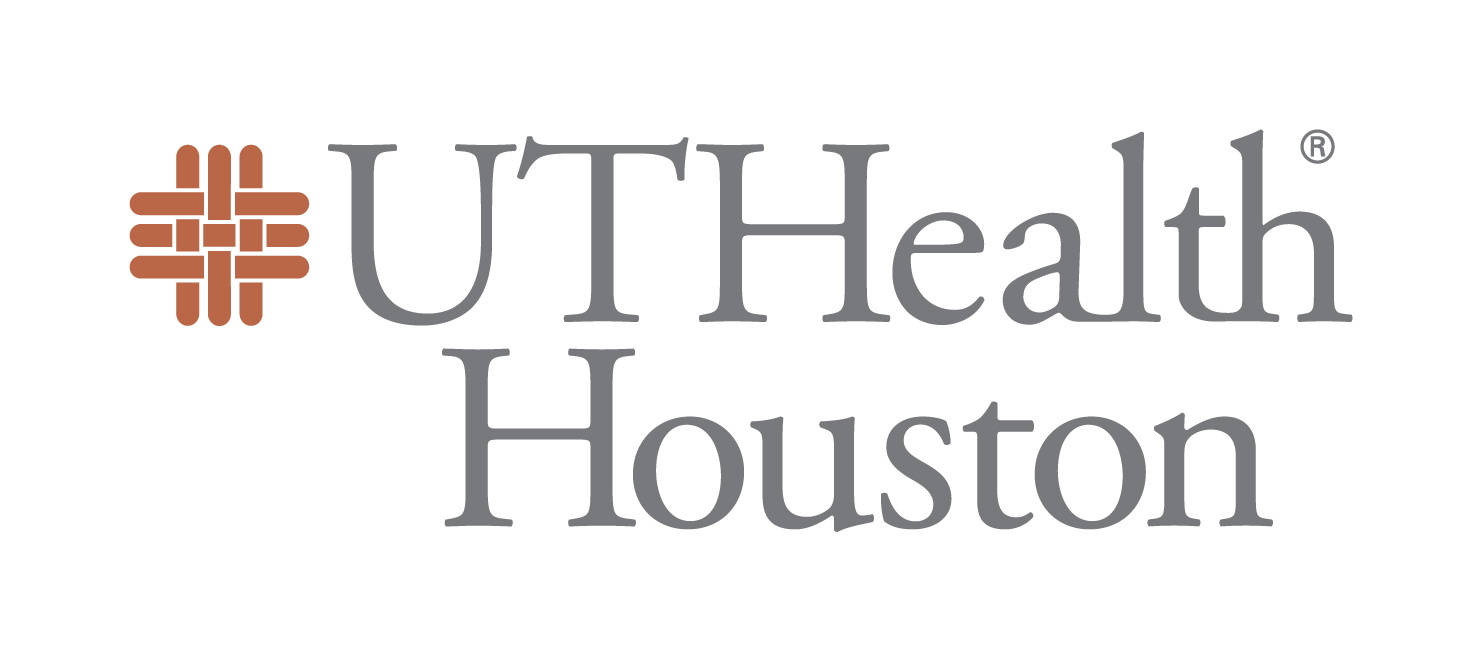| Tissue | Expression Dynamics | Abbreviation |
| Breast | 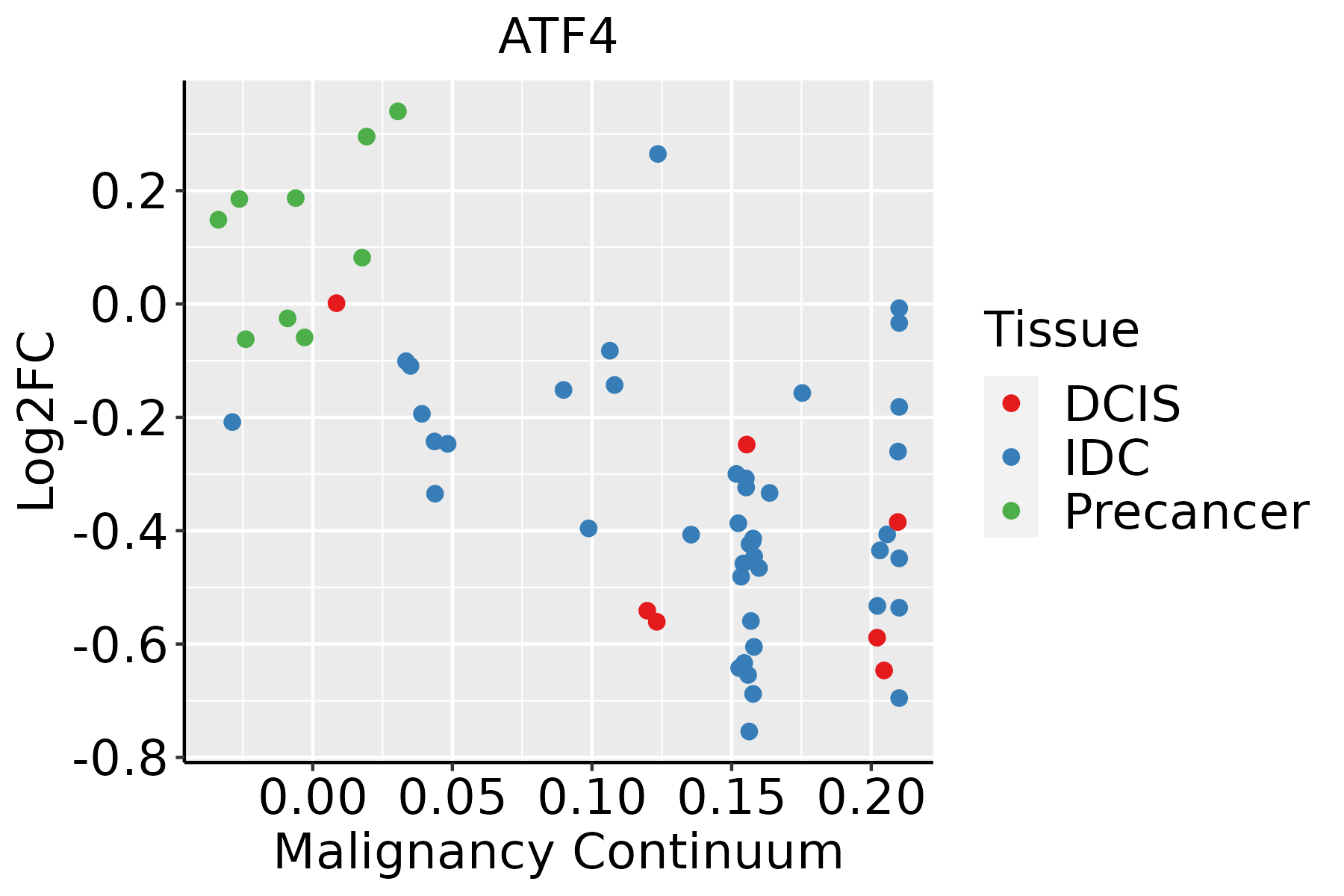 | IDC: Invasive ductal carcinoma |
| DCIS: Ductal carcinoma in situ |
| Precancer(BRCA1-mut): Precancerous lesion from BRCA1 mutation carriers |
| Colorectum (GSE201348) |  | FAP: Familial adenomatous polyposis |
| CRC: Colorectal cancer |
| Colorectum (HTA11) |  | AD: Adenomas |
| SER: Sessile serrated lesions |
| MSI-H: Microsatellite-high colorectal cancer |
| MSS: Microsatellite stable colorectal cancer |
| Endometrium |  | AEH: Atypical endometrial hyperplasia |
| EEC: Endometrioid Cancer |
| Esophagus |  | ESCC: Esophageal squamous cell carcinoma |
| HGIN: High-grade intraepithelial neoplasias |
| LGIN: Low-grade intraepithelial neoplasias |
| Liver |  | HCC: Hepatocellular carcinoma |
| NAFLD: Non-alcoholic fatty liver disease |
| Oral Cavity |  | EOLP: Erosive Oral lichen planus |
| LP: leukoplakia |
| NEOLP: Non-erosive oral lichen planus |
| OSCC: Oral squamous cell carcinoma |
| Prostate |  | BPH: Benign Prostatic Hyperplasia |
| Skin |  | AK: Actinic keratosis |
| cSCC: Cutaneous squamous cell carcinoma |
| SCCIS:squamous cell carcinoma in situ |
| Thyroid |  | ATC: Anaplastic thyroid cancer |
| HT: Hashimoto's thyroiditis |
| PTC: Papillary thyroid cancer |
| GO ID | Tissue | Disease Stage | Description | Gene Ratio | Bg Ratio | pvalue | p.adjust | Count |
| GO:007099716 | Endometrium | AEH | neuron death | 56/2100 | 361/18723 | 7.51e-03 | 4.26e-02 | 56 |
| GO:19015222 | Endometrium | AEH | positive regulation of transcription from RNA polymerase II promoter involved in cellular response to chemical stimulus | 7/2100 | 22/18723 | 8.22e-03 | 4.51e-02 | 7 |
| GO:01101481 | Endometrium | AEH | biomineralization | 30/2100 | 171/18723 | 8.63e-03 | 4.71e-02 | 30 |
| GO:00466856 | Endometrium | AEH | response to arsenic-containing substance | 9/2100 | 33/18723 | 8.71e-03 | 4.75e-02 | 9 |
| GO:009719317 | Endometrium | EEC | intrinsic apoptotic signaling pathway | 80/2168 | 288/18723 | 3.35e-14 | 9.13e-12 | 80 |
| GO:000641315 | Endometrium | EEC | translational initiation | 42/2168 | 118/18723 | 7.65e-12 | 1.24e-09 | 42 |
| GO:000697917 | Endometrium | EEC | response to oxidative stress | 99/2168 | 446/18723 | 9.02e-11 | 1.13e-08 | 99 |
| GO:006219717 | Endometrium | EEC | cellular response to chemical stress | 77/2168 | 337/18723 | 2.87e-09 | 2.10e-07 | 77 |
| GO:003497617 | Endometrium | EEC | response to endoplasmic reticulum stress | 63/2168 | 256/18723 | 3.84e-09 | 2.71e-07 | 63 |
| GO:000641717 | Endometrium | EEC | regulation of translation | 94/2168 | 468/18723 | 5.37e-08 | 2.88e-06 | 94 |
| GO:004851114 | Endometrium | EEC | rhythmic process | 67/2168 | 298/18723 | 5.86e-08 | 3.11e-06 | 67 |
| GO:003459917 | Endometrium | EEC | cellular response to oxidative stress | 63/2168 | 288/18723 | 4.05e-07 | 1.58e-05 | 63 |
| GO:003596617 | Endometrium | EEC | response to topologically incorrect protein | 41/2168 | 159/18723 | 5.20e-07 | 2.00e-05 | 41 |
| GO:000164914 | Endometrium | EEC | osteoblast differentiation | 53/2168 | 229/18723 | 5.32e-07 | 2.02e-05 | 53 |
| GO:000698617 | Endometrium | EEC | response to unfolded protein | 37/2168 | 137/18723 | 5.40e-07 | 2.04e-05 | 37 |
| GO:000644614 | Endometrium | EEC | regulation of translational initiation | 25/2168 | 79/18723 | 1.62e-06 | 5.03e-05 | 25 |
| GO:000150313 | Endometrium | EEC | ossification | 79/2168 | 408/18723 | 2.72e-06 | 7.67e-05 | 79 |
| GO:190121617 | Endometrium | EEC | positive regulation of neuron death | 28/2168 | 97/18723 | 3.08e-06 | 8.48e-05 | 28 |
| GO:003292212 | Endometrium | EEC | circadian regulation of gene expression | 22/2168 | 68/18723 | 4.49e-06 | 1.14e-04 | 22 |
| GO:000762314 | Endometrium | EEC | circadian rhythm | 46/2168 | 210/18723 | 1.37e-05 | 2.73e-04 | 46 |
| Pathway ID | Tissue | Disease Stage | Description | Gene Ratio | Bg Ratio | pvalue | p.adjust | qvalue | Count |
| hsa0501224 | Breast | IDC | Parkinson disease | 107/867 | 266/8465 | 2.57e-39 | 8.36e-37 | 6.26e-37 | 107 |
| hsa0502023 | Breast | IDC | Prion disease | 102/867 | 273/8465 | 3.70e-34 | 4.01e-32 | 3.00e-32 | 102 |
| hsa0501023 | Breast | IDC | Alzheimer disease | 107/867 | 384/8465 | 1.70e-23 | 7.88e-22 | 5.90e-22 | 107 |
| hsa0501423 | Breast | IDC | Amyotrophic lateral sclerosis | 102/867 | 364/8465 | 1.29e-22 | 5.22e-21 | 3.91e-21 | 102 |
| hsa0502223 | Breast | IDC | Pathways of neurodegeneration - multiple diseases | 116/867 | 476/8465 | 3.63e-20 | 1.18e-18 | 8.82e-19 | 116 |
| hsa0493223 | Breast | IDC | Non-alcoholic fatty liver disease | 50/867 | 155/8465 | 3.48e-14 | 8.08e-13 | 6.05e-13 | 50 |
| hsa0491523 | Breast | IDC | Estrogen signaling pathway | 35/867 | 138/8465 | 2.55e-07 | 5.18e-06 | 3.88e-06 | 35 |
| hsa0421022 | Breast | IDC | Apoptosis | 31/867 | 136/8465 | 1.34e-05 | 1.61e-04 | 1.20e-04 | 31 |
| hsa0414124 | Breast | IDC | Protein processing in endoplasmic reticulum | 36/867 | 174/8465 | 2.73e-05 | 2.86e-04 | 2.14e-04 | 36 |
| hsa050312 | Breast | IDC | Amphetamine addiction | 18/867 | 69/8465 | 1.42e-04 | 1.36e-03 | 1.01e-03 | 18 |
| hsa0516624 | Breast | IDC | Human T-cell leukemia virus 1 infection | 40/867 | 222/8465 | 2.52e-04 | 2.21e-03 | 1.66e-03 | 40 |
| hsa0516324 | Breast | IDC | Human cytomegalovirus infection | 39/867 | 225/8465 | 6.66e-04 | 5.41e-03 | 4.05e-03 | 39 |
| hsa0413723 | Breast | IDC | Mitophagy - animal | 17/867 | 72/8465 | 7.61e-04 | 6.04e-03 | 4.52e-03 | 17 |
| hsa0520322 | Breast | IDC | Viral carcinogenesis | 34/867 | 204/8465 | 2.82e-03 | 1.86e-02 | 1.39e-02 | 34 |
| hsa0541724 | Breast | IDC | Lipid and atherosclerosis | 35/867 | 215/8465 | 3.67e-03 | 2.29e-02 | 1.71e-02 | 35 |
| hsa0501234 | Breast | IDC | Parkinson disease | 107/867 | 266/8465 | 2.57e-39 | 8.36e-37 | 6.26e-37 | 107 |
| hsa0502033 | Breast | IDC | Prion disease | 102/867 | 273/8465 | 3.70e-34 | 4.01e-32 | 3.00e-32 | 102 |
| hsa0501033 | Breast | IDC | Alzheimer disease | 107/867 | 384/8465 | 1.70e-23 | 7.88e-22 | 5.90e-22 | 107 |
| hsa0501433 | Breast | IDC | Amyotrophic lateral sclerosis | 102/867 | 364/8465 | 1.29e-22 | 5.22e-21 | 3.91e-21 | 102 |
| hsa0502233 | Breast | IDC | Pathways of neurodegeneration - multiple diseases | 116/867 | 476/8465 | 3.63e-20 | 1.18e-18 | 8.82e-19 | 116 |
| TF | Cell Type | Tissue | Disease Stage | Target Gene | RSS | Regulon Activity |
| ATF4 | PLA | Colorectum | AD | RNF157,HERPUD1,EIF1, etc. | 5.18e-01 |  |
| ATF4 | PLA | Colorectum | ADJ | RNF157,HERPUD1,EIF1, etc. | 2.95e-01 |  |
| ATF4 | PLA | Colorectum | CRC | RNF157,HERPUD1,EIF1, etc. | 2.78e-01 |  |
| ATF4 | PLA | Colorectum | FAP | RNF157,HERPUD1,EIF1, etc. | 2.93e-01 | 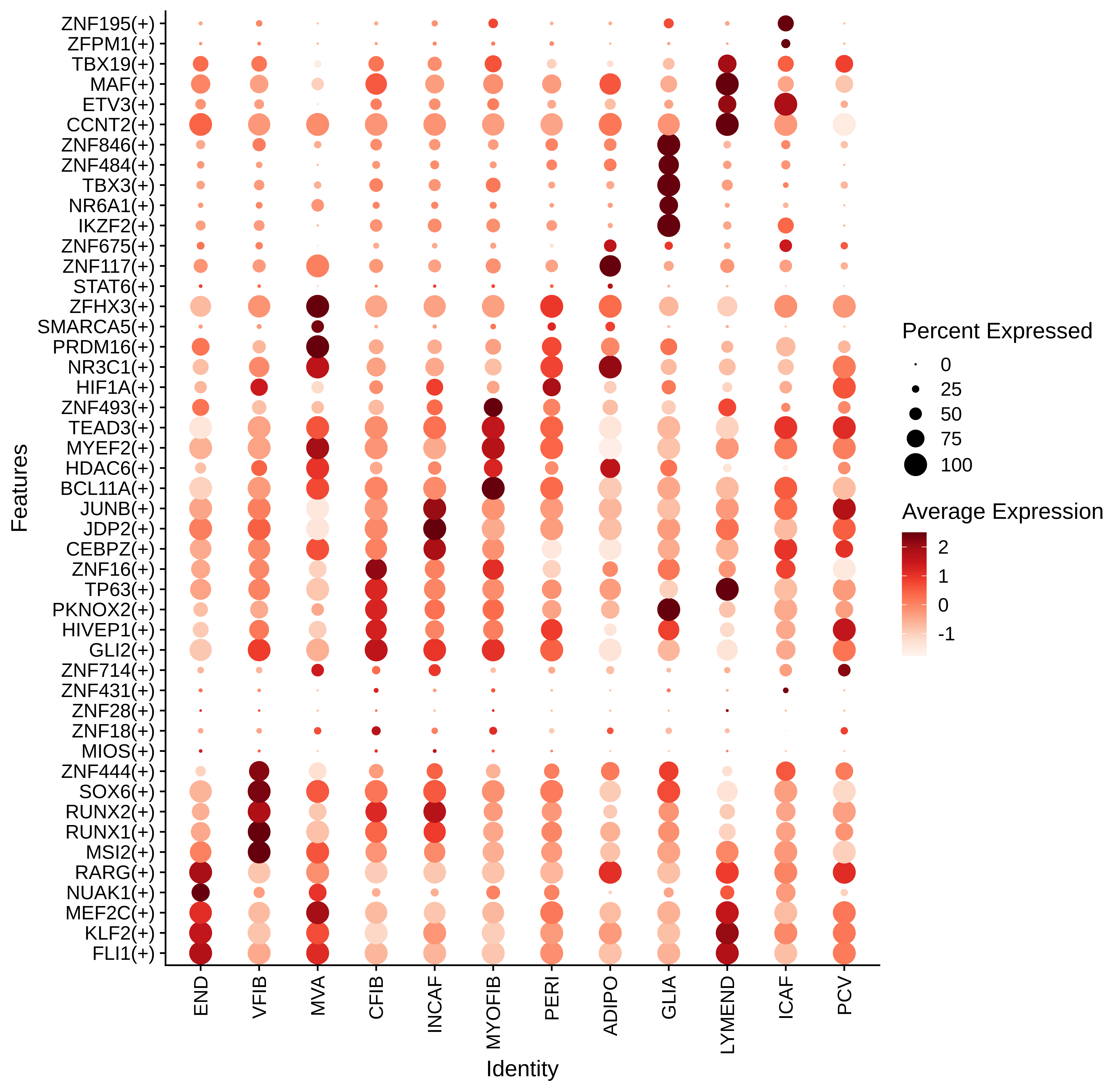 |
| ATF4 | PLA | Colorectum | Healthy | RNF157,HERPUD1,EIF1, etc. | 3.81e-01 |  |
| ATF4 | PLA | Colorectum | MSI-H | RNF157,HERPUD1,EIF1, etc. | 3.02e-01 |  |
| ATF4 | PLA | Colorectum | MSS | RNF157,HERPUD1,EIF1, etc. | 2.09e-01 |  |
| ATF4 | PLA | Colorectum | SER | RNF157,HERPUD1,EIF1, etc. | 5.22e-01 |  |
| ATF4 | CD8TEFF | Endometrium | EEC | HPRT1,EIF1,ENPP4, etc. | 1.50e-01 |  |
| ATF4 | PLA | Liver | Healthy | CD9,EIF1,CD36, etc. | 5.61e-01 |  |








 Identification of the aberrant gene expression in precancerous and cancerous lesions by comparing the gene expression of stem-like cells in diseased tissues with normal stem cells
Identification of the aberrant gene expression in precancerous and cancerous lesions by comparing the gene expression of stem-like cells in diseased tissues with normal stem cells Find out the enriched GO biological processes and KEGG pathways involved in transition from healthy to precancer to cancer
Find out the enriched GO biological processes and KEGG pathways involved in transition from healthy to precancer to cancer
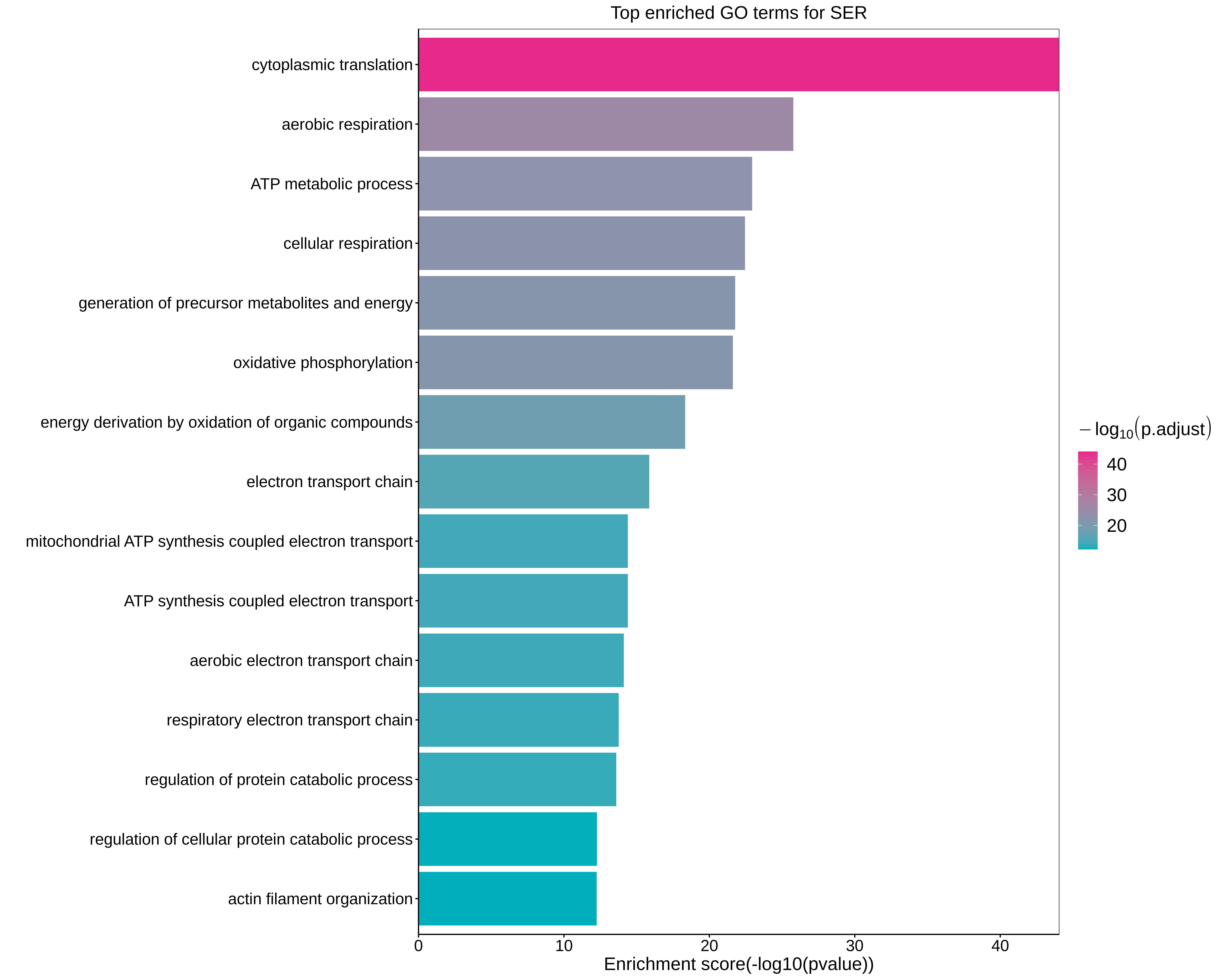

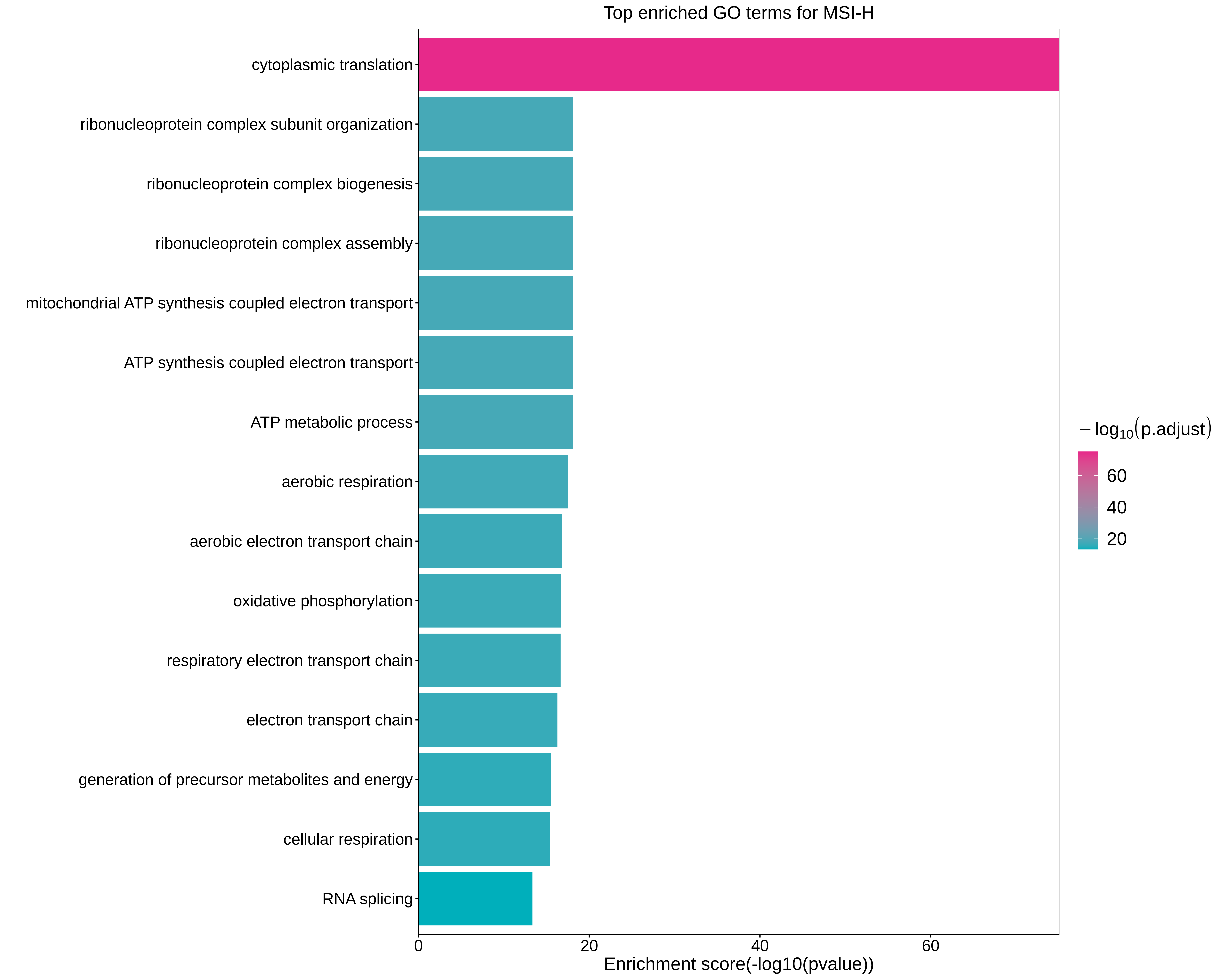
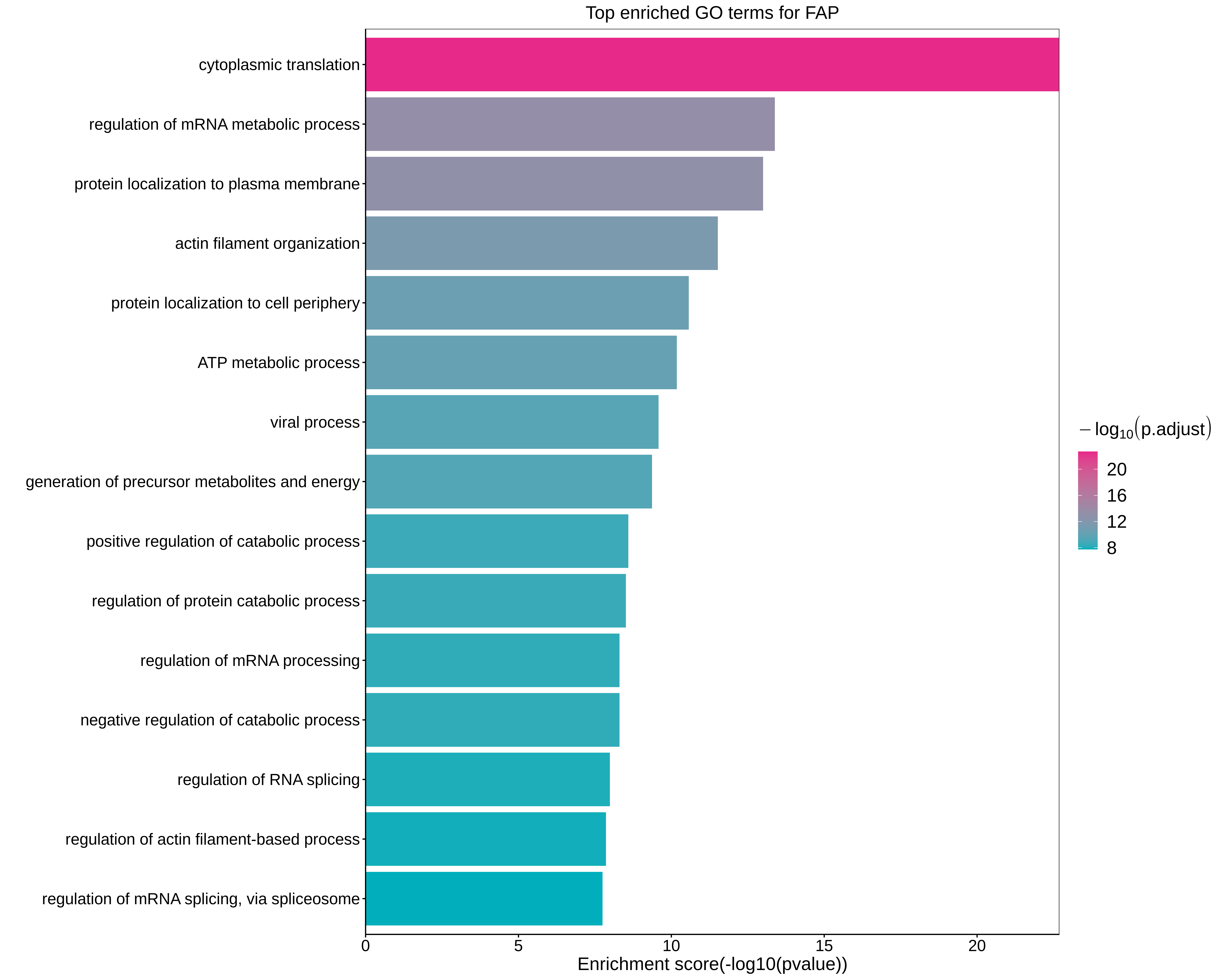
 Identification of potential cell-cell interactions between two cell types and their ligand-receptor pairs for different disease states
Identification of potential cell-cell interactions between two cell types and their ligand-receptor pairs for different disease states Find out the significant the regulons (TFs) and the target genes of each regulon across cell types for different disease states
Find out the significant the regulons (TFs) and the target genes of each regulon across cell types for different disease states Annotation of somatic variants for genes involved in malignant transformation
Annotation of somatic variants for genes involved in malignant transformation Identification of chemicals and drugs interact with genes involved in malignant transfromation
Identification of chemicals and drugs interact with genes involved in malignant transfromation



















